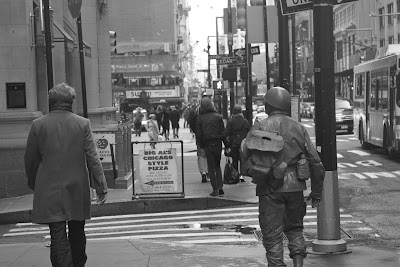Link to my video project:
http://youtu.be/rvJI_XedrDk
Sunday, April 15, 2012
Thursday, April 5, 2012
Script rough draft
JC Mejia Commercial
Scene 1 begins with JC watching a video of Jimi Hendrix while singing along
Scene 2: Reflection shot in the bathroom
Scene 3: Exiting house walking down hallway
Scene 4: Closeup shot walking into deli - Giving friend a handshake (Everyday life)
Scene 5: Walking down the street with friend (Front shot)
Scene 6: Walking up steps of train station
Scene 7: Meeting up with more friends
Scene 8: Closing scene on roof (Having conversation / Looking out at the city skyline)
Monologue:
Life is crazy, everything is a challenge you know?
But at the same time, everything is so clear to me.
Like, there's so much out there. A lot of people don't realize that they're just so stuck on what they want, but they forget what they have. I have friends, family, love, style, wisdom, motivation, and most importantly, I have talent.
See, I know this won't happen over night, but when it does, just know I'm ready.
My name is Jc Mejia.... Stay tuned.
Monday, February 27, 2012
Photoshop Assignment
Here are some shots I took at a show in Webster Hall. I wanted to go for a cinematic look and and capture the tone/atmosphere of the night. In photoshop I messed around with contrast, vibrance, and clarity to make the photos look hyperreal.
Monday, February 13, 2012
Sunday, January 29, 2012
Reading Assignment 1/23/2012
The Visual Components & Contrast and Affinity:
This reading was very informative. I like how the author broke down the basic visual components of a picture and their relationship with moods, emotions, ideas, and visual structure. I was already aware of these components, but the reading helped further my understanding of their roles in both film and photography. I also found the section on visual stereotypes and progression fascinating. These are techniques that I have found easy to overlook since pictures and films are such a major part of my life. I would be interested in talking more about these concepts in class. One question I have after reading this is: How can we structure contrast and affinity to these visual components to convey a sense of balance? I want to develop a greater understanding of these terms so I can apply them successfully to my work.
The Process of Sight:
I found this reading to be extremely conceptual and philosophical. Cézanne's ideas on sight and interpretation of reality were years ahead of his time. He was truly a renaissance man. "Our impressions require interpretation; to look is to create what you see. Reality is not out there waiting to be witnessed; reality is made by the mind. I also found it fascinating how the reading ties Cézanne's discovery of postimpressionism with the invention of the photograph. In many ways I think photography forced many artists to reevaluate the intent of their work and their original visions. I think this is extremely relevant because we live in a society where technology is so dominant. The issues of man vs. machine are not new, and this article is a clear indicator of that. I think one reason Cézanne's work is so influential is that it provided a cross roads betweens the worlds of art, science, psychology, and philosophy. I would love to learn more on Cézanne's concept of nonfinito. "He knew that his paintings were only literally blank. Their incompleteness was really a metaphor for the process of sight." I think there is a never ending argument about the benefits of painting vs photography and I would love to discuss more about this in class.
This reading was very informative. I like how the author broke down the basic visual components of a picture and their relationship with moods, emotions, ideas, and visual structure. I was already aware of these components, but the reading helped further my understanding of their roles in both film and photography. I also found the section on visual stereotypes and progression fascinating. These are techniques that I have found easy to overlook since pictures and films are such a major part of my life. I would be interested in talking more about these concepts in class. One question I have after reading this is: How can we structure contrast and affinity to these visual components to convey a sense of balance? I want to develop a greater understanding of these terms so I can apply them successfully to my work.
The Process of Sight:
I found this reading to be extremely conceptual and philosophical. Cézanne's ideas on sight and interpretation of reality were years ahead of his time. He was truly a renaissance man. "Our impressions require interpretation; to look is to create what you see. Reality is not out there waiting to be witnessed; reality is made by the mind. I also found it fascinating how the reading ties Cézanne's discovery of postimpressionism with the invention of the photograph. In many ways I think photography forced many artists to reevaluate the intent of their work and their original visions. I think this is extremely relevant because we live in a society where technology is so dominant. The issues of man vs. machine are not new, and this article is a clear indicator of that. I think one reason Cézanne's work is so influential is that it provided a cross roads betweens the worlds of art, science, psychology, and philosophy. I would love to learn more on Cézanne's concept of nonfinito. "He knew that his paintings were only literally blank. Their incompleteness was really a metaphor for the process of sight." I think there is a never ending argument about the benefits of painting vs photography and I would love to discuss more about this in class.
Subscribe to:
Comments (Atom)

























